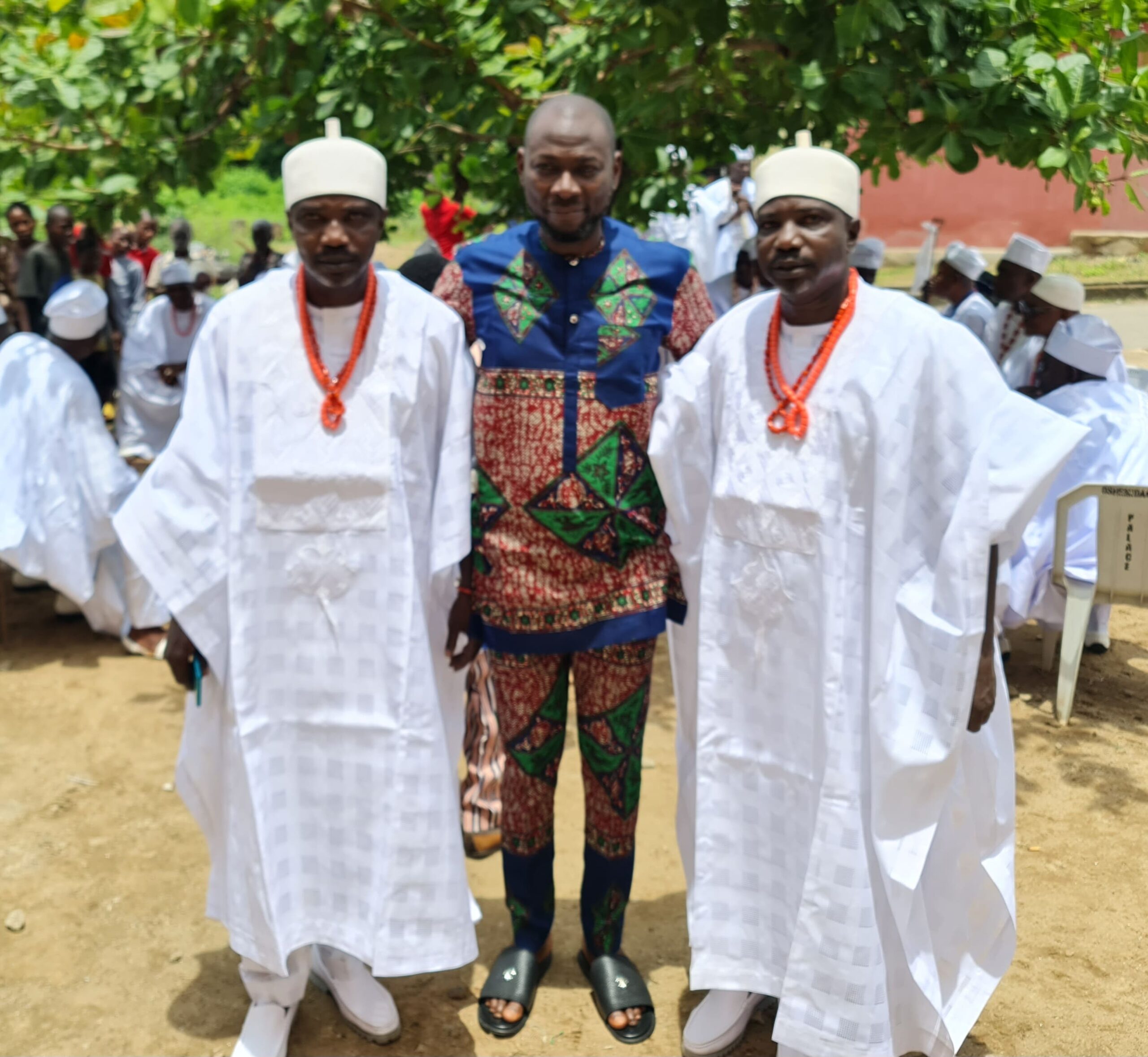
Every six calendar years (seven, traditionally) in Igarra, the northernmost part of Edo State, the people stage the Aba Festival (also called Irepa). It is arguably the biggest event in Edo North, or, comparatively, Edo State, attracting hundreds of thousands of people – Igarras, their relations, friends and visitors alike. The 2023 edition held August 18, 2023.
The major highlight of the event is the ascension of freshly minted elders into the Azebani group, which is the highest age group. It is always a huge achievement that is about 30 years in the making, progressing from one age group to another every six years. Any family that produces an Azebani will therefore pull out all the stops to mark the event in grand style.
Aba Festival has been growing bigger with every edition. The 2023 edition, no doubt, was huge, the biggest so far, and this is in spite of the difficulties associated with accessing Igarra: Poor state of the Benin-Auchi expressway, the equally terrible Okene-Ibillo road and the not-so-better route, the Ifo-Afuze-Auchi road. Added to this was the spate of kidnapping for ransom in the Edo North, Ondo East and Kogi South axis, with Igarra starting to bear the brunt because of its location in the aforementioned triangle.
The bad roads and spate of kidnappings did not dampen the people’s enthusiasm, though. Below are five unique things about the 39th edition of the Aba Festival.
Unique people, enduring culture

There is no doubt the Igarras are some of the most beautiful, unique people in Nigeria, probably because of their heritage. The people trace their ancestry all the way to the Jukuns in Taraba State, and specifically to Idah in Kogi State. As the story goes, the town was founded because of revolt against injustice, therefore, there are no cultural strictures holding the people back. And they love life. The culture could be summarised as the warrior spirit of the Jukuns mixed with the cosmopolitan nature and love of life of the Yoruba.
The Azebani is the top echelon of the stratification of the community, where the elders become the custodians of the culture, traditions and lores of the community. On Aba Day, only the freshly minted elders adorn white attire – clothes, shoes, every paraphernalia is white. Any other person turned out like an azebani will be heavily fined. The new elders proceed in groups to the Aba ground, where the beating of the Aba drum signifies their ascension. It is a momentous occasion, not just for the celebrants, but also their families, extended families and friends. After the beating of the drums, the elders proceed to their homes for the traditional eating of huge mounds of pounded yam.
It’s pounded yam, period!
Igarras like their pounded yam. It is never in doubt which food to serve during celebrations. Pounded yam and egusi soup, with beef (or goat meat), bushmeat (grasscutter is preferred) and dry fish as well as generous spicing with locust beans occupy a pride of place. Lately, ogbono soup has made an entry probably because of the ease with which it facilitates the descent of pounded yam in the throat. Growing up, it was always egusi soup. And the Igarras have a special way they prepare their egusi.
The egusi (melon) is dried to perfection, blended with crayfish into a fine paste, and turned into tiny balls when it’s being added to a boiling broth of condiments with all the many meat, snails and fish in the pot. The end result is a tantalising serving of sizzling hot, tasty egusi soup with piping hot pounded yam. The greater beauty of the food is family members coming together to eat as one, irrespective of status. Eating is according to age groups; women and children are given special recognition. It is unthinkable to serve any other food on Aba Day.
Fun fact: In Igarra, pounding yam isn’t the exclusive preserve of women. Indeed, when it comes to pounding for large groups of people, the men pitch in, so that the pounded yam will be served hot. Who eats cold pounded yam?
Gorigo seller and her PoS machine
One of the most enduring sights of the 39th Aba Festival was the widespread nature of cashless transactions. Picture a young girl with a tray full of roast groundnut finely balanced on her head. When she brings the tray down to sell, ensconced among the wraps of groundnut is a PoS machine! It was an incredible sight. The picture I however got was that of a gorigo (benny seed) seller. PoS machines are common in Igarra, so much so that the need for cash exchange is limited. The town is an excellent example of government’s success in deepening cashless transactions outside the major cities.
The benefit of PoS machine was on display witnessing the gorigo seller in action. Some buyers did not have enough cash on them. At least one person used her card. She bought more gorigo than she originally planned. If the PoS machine wasn’t available, the buyer may either have bought less by borrowing money or not buy at all. The availability of the PoS machine facilitated a better deal for everybody involved.
Aba Festival has huge tourism potentials
The six-yearly Aba Festival is a huge opportunity to do many things, chief among which is putting in place facilities and services to make Igarras and visitors alike stay in the town longer. The Aba Festival itself is a one day affair, after which the new elders are given specific dates to celebrate their new status. This celebration goes on for quite some time. The Aba day attracts hundreds of thousands of people, who are exposed to the beautiful landscape of Igarra – It is part of the Kukuruku highlands that stretch all the way from Kabba in Kogi State to Owo in Ondo State.
Igarra is mountainous, with undulating hills stretching as far as the eyes can see. Early mornings, you’d see clouds envelope the hills; the clouds receding shows the birthing of another day. It’s so beautiful to watch. The challenge for all Igarras and businesses in the town is how to possibly make the event longer lasting, bring in competition like mountain climbing, among others. Baby steps are being taken, with the novel ladies football match on the eve of the festival. A lot more can be done. Having such a large number of people in one place is too great an opportunity to waste.
Can a culture this fine go belly up?
The answer, sadly, is yes. As the NTA clip of the event shows, there were undercurrents that threatened to jeopardise the festive mood. If the people who were not meant to carry the drums had succeeded, then they would have set the stage for a showdown with the real custodians who arrived the festival grounds late. There would have been skirmishes, which even the presence of armed security men would not have been able to manage. If there had been a stampede among the tens of thousands of people at the Aba ground, it would have been a major catastrophe, marring future Aba.
Nothing good last forever. In fact, good things need nurturing in order to keep delivering value. The Aba Festival is a great event, presenting excellent opportunities and platforms to develop businesses and in turn transform the town. Alas, with every such good thing, lurking around the corner is the possibility of it turning awry.
Adewole Ojo is CEO of Four Points Communications.

Ayodelé is a Lagos-based journalist and the Content and Editorial Coordinator at Meiza. All around the megacity, I am steering diverse lifestyle magazine audiences with ingenious hacks and insights that spur fast, informed decisions in their busy lives.


![Tourists mounting on the longest canopy walk in Africa. [Instagram - Lekki Conservation Centre]](https://meiza.ng/wp-content/uploads/2024/03/Tourists-mounting-on-the-longest-canopy-walk-in-Africa_edited-e1711544326193-390x220.jpg)



One Comment